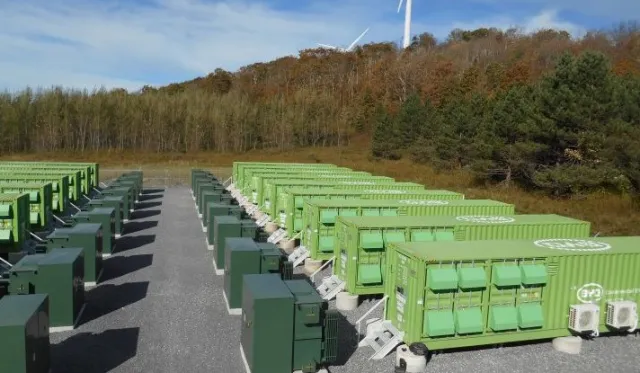Taking Aim at PJM’s 10-Hour Duration Capacity Rule for Energy Storage
Jul 24, 2019 11:00 AM ET
- The storage industry brings new numbers to the table in its challenge against the least-liked proposal from FERC Order 841.

Over the past year and a half, the U.S. energy storage industry has been getting into arguments with grid operators over their plans to implement Federal Energy Regulatory Commission Order 841, the mandate to integrate energy storage assets into the country’s wholesale energy markets.
The biggest argument to date has been over PJM’s insistence on a 10-hour duration requirement for batteries to play in its capacity market.
Storage advocates and clean energy groups say the proposal violates FERC Order 841’s call for open and equal access for energy storage assets, by effectively making it impossible for lithium-ion batteries to economically compete against fossil-fuel-fired plants in the country’s biggest capacity market.
They’ve also complained that PJM hasn’t provided an analysis to justify such a long duration requirement, which is actually based on an old rule for pumped-storage hydro projects. But the groups challenging the data behind PJM’s proposed rule haven’t had their own analysis to counter it — until now.
Last week, the Energy Storage Association and Natural Resources Defense Council unveiled an analysis by Astrapé Consulting, using PJM data and industry-standard modeling, that indicates gigawatts' worth of energy storage in 2-hour, 4-hour and 6-hour durations could provide the same capacity value as power plants that run 24 hours a day.
There’s a relatively simple explanation for this finding. While PJM may see its daily demand on peak days rise, peak and fall over the course of 10 hours or more, the true “peaks” at the very top of that demand curve “can presently be met by efficient dispatch of shorter-duration storage, given the current mix of supply resources,” ESA writes.
Specifically, “The results of our analysis demonstrate that with energy storage deployments up to 4,000 MW, 4 hours of duration allows those resources to provide full capacity value relative to a resource without duration limits,” Astrapé states.
“With energy storage deployments up to 8,000 MW, 6 hours of duration allows those resources to provide full capacity value. Within these limits, storage can replace traditional generation megawatt-for-megawatt with no reduction in system reliability.”
That’s a lot of energy storage that could serve as a cost-effective alternative to the fossil-fuel-fired power plants that serve the majority of PJM’s capacity market.
And while the analysis did project declining capacity values for shorter-duration storage as its market penetration increases, the sheer amount of new storage that would have to come online to make that happen was “unrealistic in the 10-year planning window,” Astrapé writes.
To put that finding in context, “Today we know we can add 4+ gigawatts of 4-hour storage at equivalent capacity value — and that’s four times the amount of battery storage than has been installed on the U.S. grid to date,” Jason Burwen, ESA’s vice president of policy, said in an interview.
It’s also a lot more than the estimated 336 megawatts of batteries in service or under construction in PJM, most of it subhourly duration systems serving the frequency regulation market. PJM operates the grid across a dozen states in the Mid-Atlantic and Midwest regions.
Battle over the 10-hour rule
ESA hopes that the analysis, filed with FERC in June, will add weight to its request that the agency reject PJM’s 10-hour rule as a violation of Order 841.
“This analysis is now before FERC, along with ESA’s arguments that PJM is inappropriately trying to advance a rule that violates Order 841 and would contradict its own capacity market design that FERC previously approved,” the group wrote.
PJM has not yet indicated it plans to amend its 10-hour duration requirement, despite some noteworthy political pushback. At a May event in Washington, D.C., U.S. Sen. Martin Heinrich (D-New Mexico), an energy storage supporter, expressed disapproval of PJM CEO Andy Ott for the proposal, saying it’s been “pretty roundly criticized.”
PJM’s capacity market is an important focus for environmental groups as well as energy storage advocates, because it’s been a key anchor for struggling nuclear and coal plants in the region, as well as for the natural-gas plants that are their primary replacement in the region.
Over the last several years, 29 gigawatts' worth of retiring coal plants in PJM have been replaced with 23 gigawatts of natural gas, according to Wood Mackenzie Power & Renewables.
But the resource mix that’s served PJM’s traditional capacity needs is unlikely to be the same mix best suited to serving a future with a lot more intermittent renewable wind and solar power.
While the Astrapé study didn’t look forward to those potential supply mix changes, Burwen pointed out that a recent National Renewable Energy Laboratory study shows that shorter-duration storage can provide additional capacity value as increasing solar and wind penetration lead to changes in typical daily peaks.
Burwen noted that ESA and NRDC are also hoping that this analysis serves as a starting point for FERC and the country’s other grid operators to focus on data-driven approaches to integrating energy storage into their markets.
“We argue that facts matter, and that there needs to be a relationship between this requirement and some analytically derived value,” he said.
“This question of what is the capacity value — what is the contribution to resource adequacy — that an energy-limited resource can make, is going to be of growing importance, and not just because of what’s happening in PJM.”
Also read

